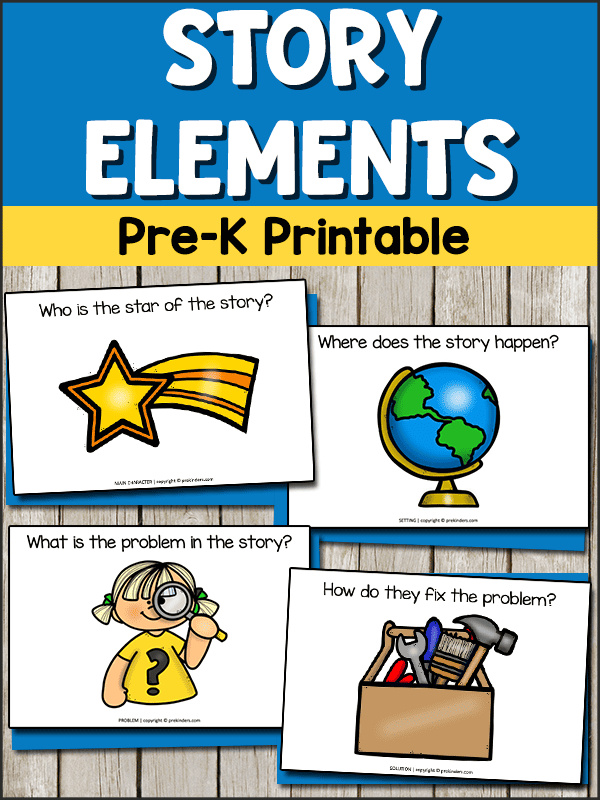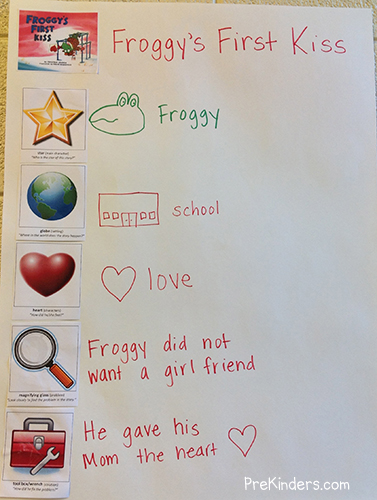Discussing story elements is a great way to encourage discussion and build new vocabulary in Pre-K. Using pictorial symbols makes it easier for young children to learn the elements of a story.
Please note: The printable for this activity is currently not available from the site where I got it. I have been trying to contact Best Practices to see if it is still available. Sorry for the inconvenience.

There’s a neat printable on the Georgia Pre-K website for teaching this to Pre-K children. I know many of you might not know about this resource, so I’ll link to the printable at the end of this post.
The printable contains Story Symbols to represent these story elements:
- Star = Main Character, “Who is the star of the story?”
- Globe = Setting, “Where in the world does the story happen?”
- Heart = Characters’ feelings, “How did he/she feel?”
- Magnifying Glass = Problem, “Look closely to find the problem in the story.”
- Tool Box = Solution, “How did they fix the problem?”
The first time we did this activity back in August, we started with one symbol: the star. The next time, we added the globe. After that, we had 3 symbols: star, globe, and heart. Later, we added the problem and solution symbols. When we do this activity, I say the picture symbol (such as “globe”), but I also say what it means, “the globe is the setting, the place where it happens”. That way, the children learn the “fancier” terminology as we do this through the year.
I use these symbols in two ways: on a chart and on a ring. For the chart, I glue the story symbols to a poster with a picture of the book cover at the top (see photos). As the children tell me about the story elements, I draw a simple picture beside each story symbol that represents what they said. We usually make a story elements chart about once a week.
To make the story ring, just laminate the story symbols and hook them onto a binder ring. You can use the story ring to have the children discuss the story as you flip through the cards. Going through the story ring is a quicker activity, and could be used as a transition activity.
These are some examples below of the story charts we have made in class. (Please excuse my bad artwork — I’m not a terrific artist and I try to draw these quickly so the kids don’t get bored.) Hint: The kids won’t care how good/bad your art is, but if drawing “on the spot” makes you nervous, just practice drawing things you think the kids will say the day before.





Please note: The printable for this activity is currently not available from the site where I got it. I have been trying to contact Best Practices to see if it is still available. Sorry for the inconvenience.
The book covers can be found online through Google Images or similar.
